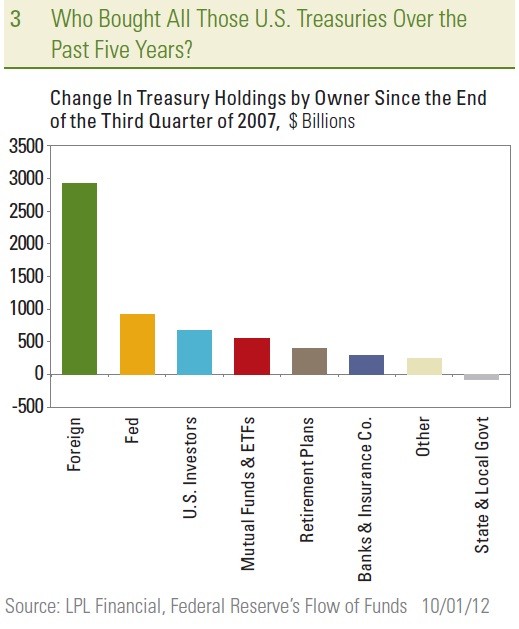Borrow Money to Fund a Retirement Account
Post on: 23 Июль, 2015 No Comment

I recently had one of my Prosper loans paid in full. I invested $125 with a borrower who wanted to borrow $24,000 to fully fund his SEP IRA, a retirement plan often used by small businesses and self-employed individuals.
Borrowing money to invest sounds risky, and it can be. But there are two interesting sides of this story, and Ill share a little bit about the pros and cons of both sides from a borrowers and lenders perspective. From there, you can make your own decisions regarding what you would do in either situation.
Note: Prosper is a peer to peer (P2P) lending company. in which people like you and I can fund loans for our peers (You can be the bank ). Like many other investments, P2P loans are not guaranteed and there is associated risk.
Using leverage for investing
Using leverage to invest basically means borrowing money to make an investment. You are hoping that in the long run, you will be able to earn more money with your investment than you pay out in interest. A similar tactic is trading on margin, which is stock trading with borrowed money. But using leverage is not limited to stock trading; it can mean borrowing money to purchase a rental property, buy a business, or in this case, fully fund a self-employed retirement account .
Borrowing money to invest
Normally, I wouldnt recommend borrowing money for investing unless you have a very good idea of the outcome. Personally, I wouldnt trade stocks on margin because Im not good enough at the stock market game to make short term trades with borrowed money.
However, there are some instances where it may not be a bad idea. For example, if you know what you are doing, then buying a rental property with borrowed money can be a great way to create a positive cash flow opportunity. The same thing can apply to buying a business with borrowed money and many other opportunities. But these situations are often less volatile than short term stock trading.
Should you borrow money to fully fund a retirement account?
As with any investment, there are risks. If you borrow money for retirement investing, or any other investing, you should have a clear idea of when you will be able to repay the loan, and limit the amount you borrow to be able to repay it as quickly as possible. Here are some pros and cons, with the negative possibilities listed first.
Cons. Investments are not guaranteed, and can lose value. Using borrowed funds to invest magnifies your potential for loss. Additionally, starting out by paying interest on the money used for your investments means you are starting in the hole and need to earn more money to break even. This last fact is mitigated by the long term nature of retirement investments, and the short term nature of the loan.
Pros. Many retirement contributions, including a SEP IRA contributions, are tax deferred, which means the contributor wont pay taxes on those funds for that tax year. You also only have one shot at retirement investing each year if you dont make the investment before the contribution deadline, you cant go back and put in money in for that tax year. A $24,000 contribution can substantially lower taxable income and save the borrower several thousand dollars the year the contribution is made, and maxing out his retirement plan gives more time for compound growth opportunity.
Why I lent money to fund a retirement account
Even though there is risk involved with this type of loan, I was intrigued enough to lend the borrower the money. Here is the purpose of loan, from the listing summary at Prosper:

I want to fully fund my SEP IRA. My company does not have a 401K and as such, a SEP-IRA is an excellent option. Particularly, I would like to make sure that I fully fund the SEP IRA for the pretax benefits.
The maximum contribution for SEP IRAs was $46,000 in 2008 when the loan was originated. The borrower needed $24,000 to fully fund his SEP IRA, which means he was able to fund $22,000 on his own. That gave me some confidence in his ability to pay off his loan. I also knew that he was employed in the software engineering industry, and I have seen some of the work he has done, which is impressive. Should he have lost his job, he would probably have been able to find work.
More borrower information. Prosper lists other financial information about borrowers, including their credit score, length of credit history, total number of open credit lines, amount of revolving credit, and more.
The borrower had an excellent credit score, a AA credit rating, a reasonable amount of debt, reasonable number of credit lines, owns his home, no delinquencies in the last 7 years, and other favorable information. In short, he looked like a good bet to pay off the loan in full.
More about the loan. The rate of the P2P loan was 9%, which offered much more opportunity for return than I would be able to receive from a standard savings account. The loan was paid in full this month, and in the almost 2 years it was open, I received just over $15 ROI ($140.57 on a $125 year loan). I would have earned more had the loan not been paid off early. While there are no perfect investments, I was satisfied with the amount of risk I took on and I am more than happy with the results.
My returns with P2P lending at Prosper. My average weighted yield from Prosper is 11.38%. Looking back, I should have seen that interest rates would continue to drop, and I wish I would have invested more money in this, and similar loans.
What are your thoughts?
Do you think taking out a 9% loan to fully fund a SEP IRA was a reasonable investment on the borrowers side (note that he paid it off just over 1 year early, so he had confidence in his ability to repay the loan). What about from a lending perspective?














